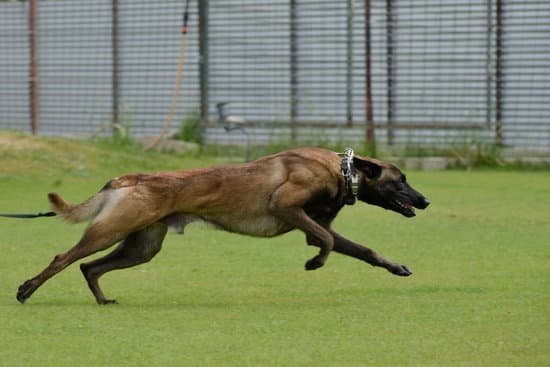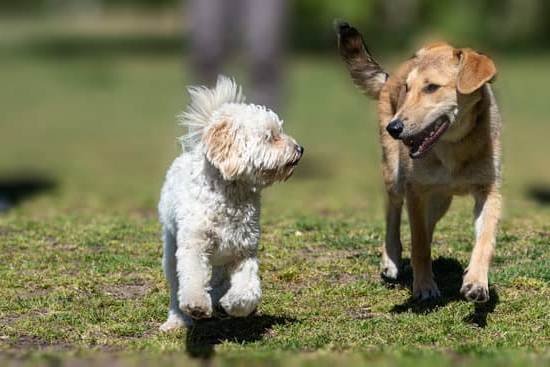Introduction
Clicker training for dogs, also known as operant conditioning or reward-based training, is a modern and effective method of dog training. It uses an audible “click” to mark the exact behavior that was desired, followed by a reward. The click acts as a bridge that connects the desired behavior with the reward, providing immediate positive reinforcement and clear communication between trainer and dog. Clicker trainers reinforce good behaviors and teach new behaviors through positive reinforcement and engagement. Clicker training is based on animal learning theory where dogs learn sequences of behavior much faster when they are positively reinforced rather than punished.
Understanding Clicker Training
Clicker training for dogs is a popular and effective method of positive reinforcement training developed by Karen Pryor. The idea behind this approach is to reward good behavior with the use of a specific sound, usually a “click” sound made by clicking a metal or plastic clicker. A dog will soon learn that when they hear the click sound, it is immediately followed by a reward such as food or praise. This very simple association teaches them to consistently repeat behaviours that have earned rewards. This type of training also enables owners to effectively and quickly communicate useful commands to their pet.
The beauty of this approach lies in its scientific understanding of the principles behind operant conditioning, which states that when something desirable follows behaviour, it will be repeated. By prompting, rewarding and reinforcing appropriate behaviour with consistent use of the click sound, you can create desired reactions more quickly than if trying to do so without using it.
By using positive reinforcement such as treats or verbal praise as motivation rather than punishment or negative reinforcement such as scolding or physical discipline, this clicker training method is not only more humane and effective but can also be just as effective in shaping more difficult behaviours such as aggression or fearfulness. Additionally, clicking gives pet owners immediate feedback which they can make use of while issuing commands. Research has shown that animals taught through positive reinforcement methods tend to perform better and retain what they have been taught for longer than with other methods making clicker training an excellent choice for pet owners who want quick results with long-term retention from their pets whilst remaining gentle throughout the process.
Clicker Training Pioneers
Karen Pryor is an animal trainer, science writer and author of the classic clicker training book, Don’t Shoot The Dog! Her groundbreaking work in animal training has revolutionized the way people interact with their pets. She developed a concept called marker training, or “clicker” training. Marker training uses a specific auditory signal to mark desired behaviour along with positive reinforcement to shape behaviour. It has been used successfully on dogs, cats, horses and many other animals.
Through her books and lectures, Karen Pryor has spread the word about clicker training to dog owners around the world. Many trainers today rely on her methods for teaching obedience skills, reducing aggression and improving overall pet behavior. Clicker Training provides a simple but powerful way to communicate with an animal that responds to precise cues instead of vague gestures and commands. Animals can understand what is wanted quickly so they can begin learning new behaviors more easily. It is also faster than traditional methods of reward-based incentive systems. Clicker Training allows owners to finesse how they communicate more precisely with their animals so both parties understand what is expected from each other.
Karen Pryor’s work is not limited to just dog owners; she believes her techniques should be adopted by anyone who works with animals – from zoo keepers and marine animal trainers to small-time hobbyists who want better relationships with their own pets at home. Her research has helped advance our understanding of behaviour modification techniques, making it easier for us all to have happy and healthy relationships with our furry friends through effective communication techniques done safely and humanely using rewards-based markers like clickers or whistles as opposed to harsher physical or verbal punishment techniques or intimidation tactics.
Karen Pryor’s Clicker Training Philosophies and Processes
Karen Pryor is an American author, animal trainer, and scientist whose work focuses on the use of positive reinforcement in the training of animals. She developed ‘clicker training’ – a form of reward-based training that relies on precise timing and efficient communication between animal and trainer.
Clicker training uses a hand-held device called a clicker to mark desired behaviours; every time the clicker sounds a treat is given to acknowledge good behaviour and encourage it for future occasions. As opposed to traditional methods which often punish or reprimand animals for undesired behaviours, this process rewards only positive behaviour. The purpose of clicking is to tell the animal precisely what it has done correctly so it will learn to repeat the behaviour when asked. The sound of the click bridges the gap between behvavier and reward,teaching an animal quickly what activity elicits an immediate reward.
Through her research, lectures, consultations and books, Karen Pryor promotesclicker training as an effective method for teaching a wide variety of things such as responses like “sit” or “down” but also more complex behaviours like playing soccer or zigzagging around cones in agility courses. Pryor encourages learners to take advantage of animals’ natural desire to have fun by making learning games out of activities like fetching balls or retrieving objects. According to her theories, once a dog knows how to do something it enjoys with precision, they can expend their energy in other healthy ways such as playing with other dogs or going on walks without barking excessively at others they encounter while they’re out. This helps create calmness and order in family life while having fun at the same time!
How to Start Clicker Training At Home
Clicker training for dogs is a positive reinforcement training method used to teach behaviors quickly and effectively. Developed by animal behaviorist Karen Pryor, clicker training can be done at home with minimal equipment and effort.
Before beginning clicker training for your dog, you will need to purchase or make a clicker. A clicker is an audible tool that makes a sharp clicking sound when pressed, signaling to your dog that they are doing the right thing. Consider using a brightly colored wrist strap with your clicker so it remains easily accessible during training sessions.
Once the physical set-up is complete, start with simple commands such as “sit” or “down” paired with verbal cues such as hand signals or words of encouragement. Each time your dog does the desired behavior accurately, use the clicker followed by a reward such as a treat or special toy. Doing this in quick succession will help create a bond between you and your pup; allowing them to understand what behaviors will earn them praise and rewards.
In addition to teaching basic commands, clicker training can be used for the overall shaping of good behavior in general life scenarios like walking on a leash and getting along with other animals or people. Clicker training should always be conducted in calm environments where your dog can focus fully on what they are being taught without being distracted by external stimuli. Introduce new tasks slowly and mix-up rewards when needed to keep things interesting and fun!
Necessary Tools and Supplies for Clicker Training
Clicker training for dogs is an effective and rewarding way to teach your furry friend to obey commands through positive reinforcement. Karen Pryor, animal behaviorist and renowned clicker trainer, has outlined the necessary tools and supplies needed for a successful new program.
A clicker is the most important piece of equipment in this type of training. It is a small box-like device that emits a unique sound that your dog can easily recognize as a reward for doing what was asked. A variety of treats are also essential; soft snacks that can be easy to chew during training provide immediate rewards that keep the pup attentive and engaged. Treats should only be given out when your dog performs correctly so that they don’t develop cravings from treats unrelated to good behavior.
Further supplies include leashes and/or collars; these will depend on the breed and age of your puppy, but should always provide safe guidance during walks and sessions. Clicker training relies heavily on verbal instruction; especially when teaching words like ‘sit’ or ‘come’. Keeping treats on hand and ensuring calmness in order to establish a strong bond between you and your dog is essential if you wish to have long lasting results from clicker sessions!
Clicker Training Advice and Troubleshooting
Clicker training for dogs is a powerful, rewarding way to teach your pup new behaviors and foster a strong bond between the two of you. It’s important to take the time to understand the approach, practice it properly, and use rewards-based training methods that are puppy-friendly and won’t cause unwanted behavior.
In order to ensure success when using clicker training for dogs, it is vital to learn from an experienced dog trainer who can provide detailed guidance on proper technique. The book ‘Clicker Training for Dogs’ by Karen Pryor offers expertise on how to use this useful tool as part of its comprehensive advice on training techniques suitable for all levels of experience. Additionally, it includes tips on troubleshooting problems which might arise when first beginning with clicker sessions such as the concept not being understood by the pup or them becoming too distracted by treats. Prompts are given on how to make sure they still remain engaged in activities while mastering commands. Special attention will be given in helping you decide what motivates your pet best; whether that is verbal praise or a favorite snack treat. Practicing exercises such as sit/stay/come will become much easier as you learn effective methods with clicker reinforcement.
Overall, Karen Pryor provides informative instruction for dogs and their human owners looking for success in utilizing this type of canine communication method which ensures humane treatment and quick learning within each session – offering both fun and reward during each interaction!
Clicker Training Problem-solving and Reward System Ideas
Clicker training is an effective reward-based system created by Karen Pryor, which uses a clicker and treats to motivate your dog to obey commands. It’s a great way to communicate with your pet and build a stronger relationship between the two of you. With the clicker, dogs learn quickly what they are doing right and what they are doing wrong. The sound of just one click helps tell them that whatever behavior they were performing at that time was the right one, so they should repeat it.
A great way to use this technique is by introducing specific play activities as rewards for correct responses from your dog. For instance, if your dog correctly executes a command then you can reward them with tug of war or fetch. By rewarding desirable behavior in this manner, your pet will more likely perform that task next time without needing to be asked; it also teaches them impulse control in the future when presented with similar situations.
Furthermore, you can use clicker training as a positive form of problem-solving. For example, some dogs display unwanted barking behavior when left alone for extended periods of time; using clicker training for these troubled pets allows owners to redirect their pup’s attention towards something else like chewing on an appropriate toy or bonding with their human companion. Clicker training also encourages mentally stimulating behaviors like puzzle solving or conversation ques where dogs have to think before responding. These activities don’t just ensure an animal’s obedience but foster greater trust between owners and their pets as well.
Clicker Training Exercises and Strategies
Clicker training is a method of canine obedience training and behavior modification that involves the use of positive reinforcement. Developed in 1996 by Karen Pryor, clicker training is among the most popular methods used by modern dog trainers. The clicker is an easily recognizable sound device that delivers an unmistakable “click” noise when pressed; this sound marks the desired behavior and signals to your dog that it has done something right and should be rewarded with a treat. The dog, over time, learns to associate the click with a reward thus making it less likely to repeat unwanted behaviors.
Clicker training exercises involve teaching dogs to recognize verbal commands or hand signals and respond appropriately. These exercises can include basic obedience commands such as sit, stay, down, come, heel, retrieve items or do tricks like shaking hands or rolling over. Clicker training is also used for more difficult-to-train dogs for service work, agility competitions, scent detection or other specialized jobs. Additionally, clicker training can be utilized to stop undesirable behaviors such as jumping on guests when they arrive or barking at other animals out of fear or aggression. With repetition and patience, you will eventually understand how your pet learns best through clicker training exercises so you can customize a program for them for maximum effectiveness.
Concluding Thoughts
Clicker training is a powerful and effective tool that has revolutionized dog training. Clicker training allows owners to quickly and effectively train their dogs, in a humane and positive way. The simplicity of the system makes it simple for any raiser, dog handler, or even pet owner to learn, use, and teach with clickers. It not only works to address problem behaviours but also strengthens good behaviours. With consistency and an understanding of how animal behaviour works, clicker training can help develop meaning relationships between humans and dogs to last a lifetime.
The effectiveness of clicker training lies in the exact timing and definition of cues which provide prompt rewards for desired behaviours. This process improves the dog’s learning outcomes by making it very clear when certain behaviors are accepted or rejected. Additionally, when used in conjunction with treats as reward reinforcement tools, this method encourages faster learning outcomes for many dogs because they would rather receive food than verbal praise alone.
Beyond its instant results, clicker training offers long-term sustainability as well; as soon as a behavior is learned properly using the clicker method, it can be maintained over time without being forgotten. Clicker methods also strengthen existing bonds between owners and their pets while reducing fear aggression responses by providing positive feedback cycles between them during practice sessions – both beneficial elements in an overall sustainable relationship dynamic between humans & animals over time.

Welcome to the blog! I am a professional dog trainer and have been working with dogs for many years. In this blog, I will be discussing various topics related to dog training, including tips, tricks, and advice. I hope you find this information helpful and informative. Thanks for reading!





